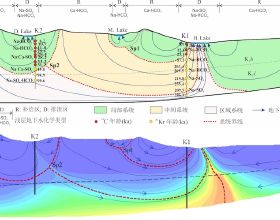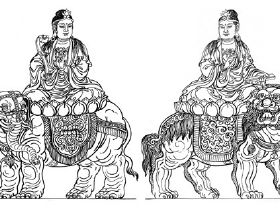SPTBN1是位於2號染色體的基因。
美國北卡羅來納大學Damaris N. Lorenzo、Margot A. Cousin等研究人員合作發現,致病性SPTBN1變異導致常染色體顯性遺傳神經發育綜合徵。2021年7月1日,《自然—遺傳學》雜誌線上發表了這項成果。
研究人員在29名個體中鑑定了雜合的SPTBN1變異,這些個體出現:發育、語言和運動發育遲緩;輕度至重度智力障礙;自閉症特徵;癲癇發作;行為和運動異常;張力減退;以及可變的畸形面部特徵。研究人員表明,這些SPTBN1變體會影響βII-血影蛋白穩定性、破壞與關鍵分子伴侶的結合並擾亂細胞骨架組織和動態。這項研究將SPTBN1變異體定義為神經發育綜合徵的遺傳基礎,擴大了影響大腦的血影蛋白病集,並強調了βII-血影蛋白在中樞神經系統中的關鍵作用。
據瞭解,SPTBN1編碼 βII-血影蛋白,這是一種普遍表達的β-血影蛋白,形成與質膜相關的微米級網路。缺乏神經元βII-血影蛋白的小鼠在皮質組織、發育遲緩和行為缺陷方面存在缺陷。這些表型雖然不太嚴重,但在單倍體不足的動物中觀察到,這表明攜帶雜合SPTBN1變體的個體也可能表現出可測量的神經發育和功能損害。
附:英文原文
Title: Pathogenic SPTBN1 variants cause an autosomal dominant neurodevelopmental syndrome
Author: Margot A. Cousin, Blake A. Creighton, Keith A. Breau, Rebecca C. Spillmann, Erin Torti, Sruthi Dontu, Swarnendu Tripathi, Deepa Ajit, Reginald J. Edwards, Simone Afriyie, Julia C. Bay, Kathryn M. Harper, Alvaro A. Beltran, Lorena J. Munoz, Liset Falcon Rodriguez, Michael C. Stankewich, Richard E. Person, Yue Si, Elizabeth A. Normand, Amy Blevins, Alison S. May, Louise Bier, Vimla Aggarwal, Grazia M. S. Mancini, Marjon A. van Slegtenhorst, Kirsten Cremer, Jessica Becker, Hartmut Engels, Stefan Aretz, Jennifer J. MacKenzie, Eva Brilstra, Koen L. I. van Gassen, Richard H. van Jaarsveld, Renske Oegema, Gretchen M. Parsons, Paul Mark, Ingo Helbig, Sarah E. McKeown, Robert Stratton, Benjamin Cogne, Bertrand Isidor, Pilar Cacheiro, Damian Smedley, Helen V. Firth, Tatjana Bierhals, Katja Kloth, Deike Weiss, Cecilia Fairley, Joseph T. Shieh, Amy Kritzer, Parul Jayakar, Evangeline Kurtz-Nelson, Raphael A. Bernier, Tianyun Wang, Evan E. Eichler, Ingrid M. B. H. van de Laar, Allyn McConkie-Rosell, Marie T. McDonald, Jennifer Kemppainen, Brendan C. Lanpher, Laura E. Schultz-Rogers, Lauren B. Gunderson, Pavel N. Pichurin, Grace Yoon, Michael Zech, Robert Jech
Issue&Volume: 2021-07-01
Abstract: SPTBN1 encodes βII-spectrin, the ubiquitously expressed β-spectrin that forms micrometer-scale networks associated with plasma membranes. Mice deficient in neuronal βII-spectrin have defects in cortical organization, developmental delay and behavioral deficiencies. These phenotypes, while less severe, are observed in haploinsufficient animals, suggesting that individuals carrying heterozygous SPTBN1 variants may also show measurable compromise of neural development and function. Here we identify heterozygous SPTBN1 variants in 29 individuals with developmental, language and motor delays; mild to severe intellectual disability; autistic features; seizures; behavioral and movement abnormalities; hypotonia; and variable dysmorphic facial features. We show that these SPTBN1 variants lead to effects that affect βII-spectrin stability, disrupt binding to key molecular partners, and disturb cytoskeleton organization and dynamics. Our studies define SPTBN1 variants as the genetic basis of a neurodevelopmental syndrome, expand the set of spectrinopathies affecting the brain and underscore the critical role of βII-spectrin in the central nervous system.
DOI: 10.1038/s41588-021-00886-z






















